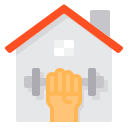Motivation and Habit Formation
Place your mat where you exercise, prep water and a towel, and schedule a start alarm tied to a daily anchor like coffee. Reduce friction to remove excuses. Celebrate completing the first set; dopamine rewards reinforce repeat behavior. What’s your most reliable cue?
Motivation and Habit Formation
Start with five focused minutes to build momentum, then expand. Identify as someone who trains—identity precedes action. Reader Maya began with 3 push-ups, added one daily, and improved plank time by 60% in a month. Share your tiny-win story to encourage others.
Motivation and Habit Formation
Use a partner check-in, share your plan publicly, or join a small group chat. Post a weekly summary every Sunday night. Accountability boosts adherence dramatically. Subscribe to our newsletter for printable habit trackers and reply with your favorite accountability method.
Motivation and Habit Formation
Lorem ipsum dolor sit amet, consectetur adipiscing elit. Ut elit tellus, luctus nec ullamcorper mattis, pulvinar dapibus leo.
